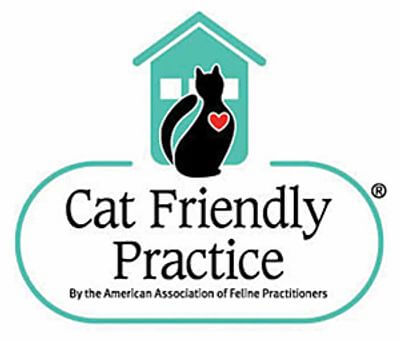What is Congestive Heart Failure (CHF)?
CHF is a common disease that is seen in both cats and dogs. It causes fluid retention due to severe heart disease. With right-sided heart failure, the fluid usually occurs in the abdomen, and with left-sided heart failure, which is more common, the fluid accumulates in the chest.
How does Congestive Heart Failure occur?
Congestive heart failure occurs when the cardiac pressure in the pet’s veins and capillaries (very tiny blood vessels) that drain into the diseased side of the heart gets to be too high and fluid starts leaking out of the veins and capillaries. Many patients that have CHF have a heart murmur (backflow of blood in the heart due to a leaky heart valve) or some other type of cardiomyopathy that is causing damage to the heart and causing an increase in cardiac pressure. Heartworm disease and congenital heart diseases can also lead to congestive heart failure.
Clinical signs of Congestive Heart Failure
Not all patients with murmurs will develop heart disease, and to complicate matters more, not every congestive heart failure case will have a murmur, although this is less common. Clinical signs of CHF differ based on whether it’s right or left-sided heart failure.
With left-side heart failure, fluid goes into the lungs and causes pulmonary edema (fluid in the lungs) which can progress to pulmonary effusion (build-up of fluid between the chest wall and lungs). Owners may notice exercise intolerance, increased breathing rates, coughing, and lethargy. The coughing occurs due to the heart enlarging and rubbing on the trachea and possibly from the fluid accumulating in the lungs. The exercise intolerance, increase breathing rates, and lethargy is due to a decrease in oxygen concentrations since the pet now had fluid in its lungs.
With right-sided CHF the most common clinical sign is abdominal ascites. This makes the pet have a large abdomen and it makes the pet look bloated or pregnant. These pets can have a decrease in appetite and a hard time getting comfortable due to the fluid in their abdomen.
Congestive heart failure is typically diagnosed with a physical exam and radiographs. Once CHF is diagnosed, treatment is started to help manage both heart disease and fluid accumulation. Additional imaging with an ultrasound (called an echocardiogram) is also helpful. An echocardiogram gives us more information about what is going on within the heart and helps to tailor medication protocols. Most of these cases are managed with medications, but if the issue is congenital or related to a disease such as heartworm disease, treatment of the underlying cause may need to be addressed with either additional treatments or surgery.
What are the treatment protocols for Congestive Heart Failure (CHF)
With left-sided CHF, a diuretic will be started to try and help get the excess fluid out of your pet’s chest. With right-sided heart failure, it can be trickier, and that’s where an echocardiogram becomes important to see what exactly is going on with the heart. Additional medications may be used for both types of heart failure. These medications tend to be pimobendan and an angiotensin-converting enzyme (ACE) inhibitor.
Pimobendan is an indicator that helps the heart beat more efficiently by opening the blood vessels that take blood away from the heart so that the heart doesn’t have to work so hard and increases the strength of the heart’s contraction. ACE inhibitors work by opening blood vessels throughout the body, so the heart doesn’t have to work so hard to pump blood through the body.
Once a diagnosis has been made and treatment begins, further monitoring is needed. I encourage my clients to do resting respiration rates at home several times a week on their pet. If there starts to be an increase in the pet’s normal resting respiration rate, this can be a sign that the pet’s CHF is changing, and the pet should be seen. There is also bloodwork that is needed periodically to make sure that the pet is tolerating its medications. If there is concern that the pet’s CHF is worsening again, then additional imaging may be needed.
What is the prognosis of Congestive Heart Failure?
The CHF prognosis varies based on the underlying cause. Fifty percent of dogs with CHF, secondary to mitral valve disease, survive for 8-10 months based on one study. Another study reports that 50% of cats with hypertrophic cardiomyopathy will die within 7-10 months of diagnosis. I personally had a dog who was diagnosed with CHF at age 10 due to dilated cardiomyopathy, and she lived for five more years and succumbed to old age. With all statistics, there are always pets that will not live as long and others that will live longer than expected. There is just no way to know.
If your pet has been diagnosed with a heart murmur, but does not have CHF, it’s important to monitor resting respiration rate at home since CHF can develop. Discuss with your veterinarian if medication is needed or if they recommend additional diagnostics. If your pet has been diagnosed with CHF, it’s understandable to be worried and even scared. The main goal is to get your pet stabilized and comfortable.
With CHF, it’s important to remember your pet’s quality of life and your relationship with your pet. If pilling your cat is impossible and is ruining your relationship, it’s okay to let your veterinarian know it’s not working and discuss other options and overall quality of life. Your veterinarian is there to help guide and advise you. We are your pet’s advocate and are able to see things without all of the emotions that come with loving our pets.



